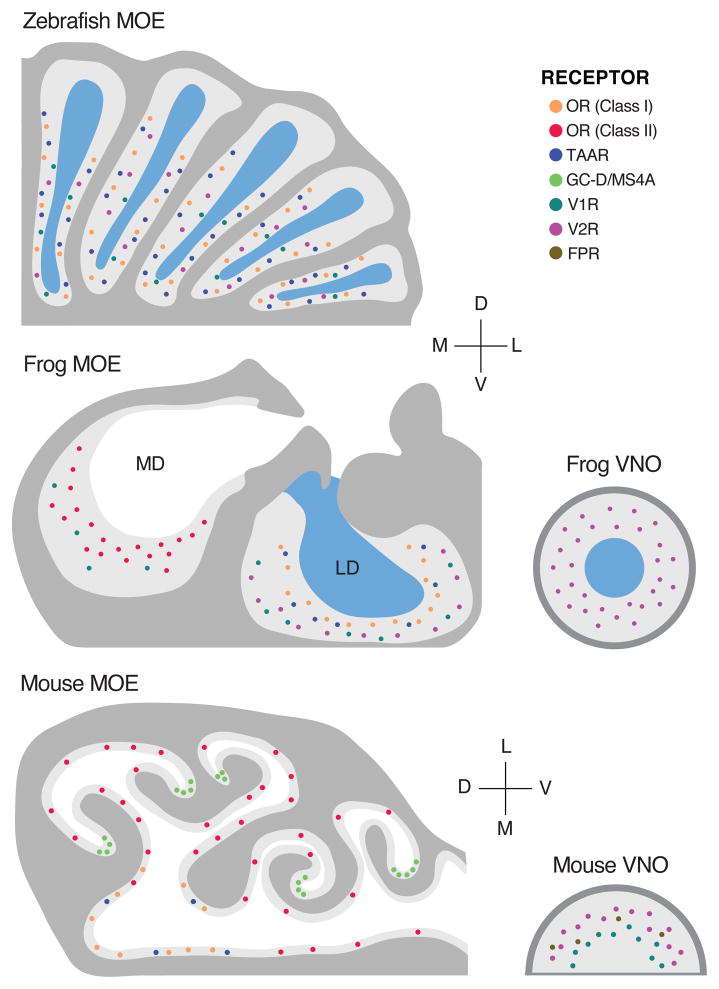Figure 4.
Peripheral organization of OR family expression across vertebrates. Top: A horizontal section of a quarter of one olfactory rosette from the zebrafish (Danio rerio). Sensory neurons are embedded in a main olfactory epithelium (MOE) with a water-filled lumen. Members of four of the five major GPCR OR families are expressed in different sensory neuron types: TAARs and Class I “classical” ORs [here denoting also fish ORs that belong to neither Class I nor Class II] are expressed in ciliated cells occupying the basal layers of the epithelium; V2Rs in microvillar cells in the middle layer; and at least one V1R in “crypt cells” of the upper layer. Axons of the three cell types project to different, spatially segregated, and stereotyped glomeruli of the zebrafish olfactory bulb. Middle: A coronal section of one half of the main olfactory epithelium and the vomeronasal organ (VNO) of the western clawed frog (Xenopus laevis). An air-filled medial diverticulum (MD) houses neurons expressing Class II “classical” ORs and several V1Rs; a water-filled lateral diverticulum (LD), Class I “classical” ORs, several TAARs, and ancestral V2Rs; the water-filled (VNO), newer members of the expanded V2R family. Bottom: A coronal section of the MOE and VNO of the house mouse (Mus musculus). Receptor family expression is segregated (several exceptions not pictured), with Class I ORs and TAARs expressed in the dorsal MOE, Class II ORs in the ventral MOE (and some in the dorsal MOE, not pictured), V1Rs in the apical VNO, V2Rs in the basal VNO, and FPRs in both VNO layers. Some sensory neurons in the “cul-de-sacs” of the MOE express the receptor guanylate cyclase GC-D and multiple members of a non-GPCR family of four-pass transmembrane chemoreceptor family, Ms4a.

